Discussed in this post: 8 books (In the Ruins of Neoliberalism; Between Realism and Revolt; Cops, Crime and Capitalism; The Last Refuge; Having and Being Had; Entangled Life; When My Brother Was an Aztec; and Feed); 8 movies (Somewhere; 24 Frames; Aniara; Salt of the Earth; Elena; Cat Soup; The Invisible Man; and Freaky); and 7 documentaries (Mayor; Sasquatch; Athlete A; The Devil Next Door; Grey Gardens; Above and Below; and Allen v. Farrow).
BOOKS
1. In the Ruins of Neoliberalism: The Rise of Antidemocratic Politics in the West by Wendy Brown.
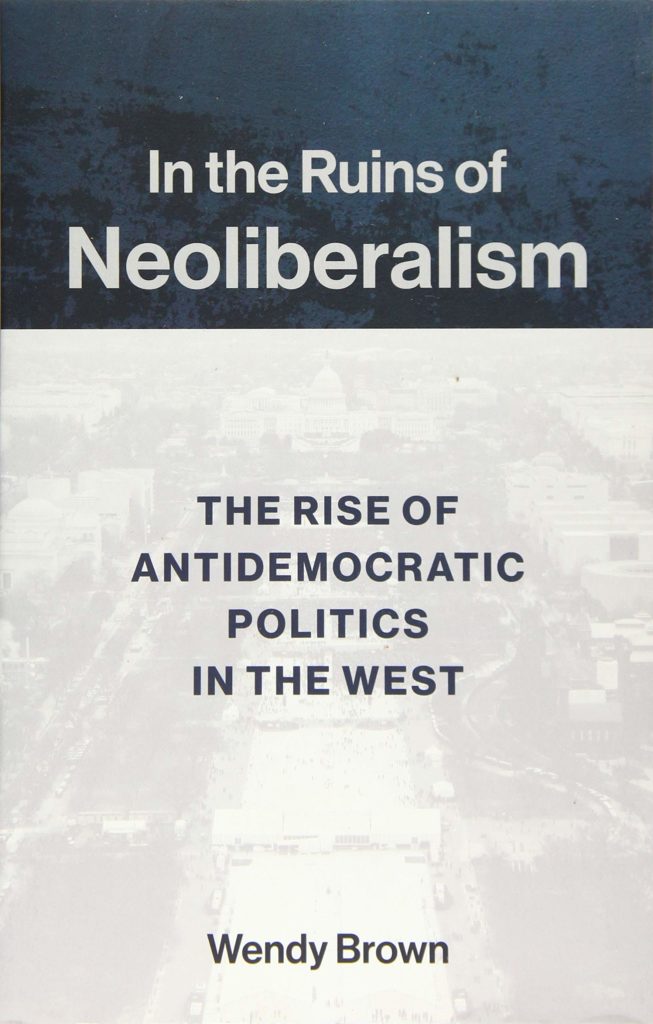
Wendy Brown belongs to a lineage of political thinkers who strongly value democracy (she was taught by Sheldon Wolin but also reminds me of Jacques Rancière). Not “actually existing democracy” (a term more frequently deployed in relation to socialism) but the democratic tradition and the values it possesses, regardless of how that has actually been co-opted or coerced into something much less democratic. She is a brilliant thinker and does an excellent job of demonstrating how the trajectory of neoliberalism—first in the work of the ordoliberals and Friedrich Hayek (whom she appears to have studied more extensively than most who critically engage his work) to its later evolutions and permutations from the ‘80s up to the election of Trump—is one that is profoundly anti-democratic and gives rise to the various tentacles of the alt-Right we have witnessed over the last half a dozen years or so. An excellent and very readable book. Highly recommended.
2. Between Realism and Revolt: Governing Cities in the Crisis of Neoliberal Globalism by Jonathan S. Davies.

A lot of neoliberal analysis occurs at national or transnational levels. A lot of the breakdown has to do with big-picture ideology, discourse, values, trends, flows, and so on. However, anyone involved in local community mobilization and the fight against austerity, the ongoing enclosure of the commons, the escalation of policing, the slashing of budgets for social supports, and the hyper-gentrification neighbourhoods assessed to produce the highest returns on investments, knows that neoliberalism has also had a profound effect on municipalities. Neoliberalism is not simply a global phenomenon—it is intimately local. But how? Well, Jonathan Davies examines eight cities around the world (Leicester, Nantes, Barcelona, Montreal, Baltimore, Greater Dandalong, Athens, and Dublin) to produce a remarkably rich study of the complexities of imposing neoliberalism upon very different peoples (within the so-called “West”—folx from the “East” and “global South” may find this studying wanting). Furthermore, relying especially upon a Gramscian model of regime analysis, Davies also examines how people tried to resist, counter, and provide alternatives to neoliberalism within these eight different cities. It’s exactly what I was looking for and highly recommended for those who are engaging with their own local contexts and trying to understand what they are up against, what pitfalls to avoid, and what can actually be done.
3. Cops, Crime and Capitalism: The Law-and-Order Agenda in Canada by Todd Gordon.

Much of the critical discourse around policing has to do with racism, colonialism, and neoliberal gentrification. This is appropriate as much of what police do is racist, colonizing, and classist, but Todd Gordon’s study (from 2008) draws attention to another important element of policing: maintaining the “order” portion of “law and order” by creating a properly disciplined working class and by ensuring those who are impoverished by systemic oppression do not find alterative ways of experiencing abundant life (here, Gordon draws more on the British tradition of policing in relation to “vagrants” and how it has influenced Canada, rather than the American history of policing and its roots in slave patrols). It’s a good study although I think Gordon overplays his hand a bit. Nonetheless, an important contribution for a fuller understanding of policing here in Canadian-occupied territories.
4. The Last Refuge: A True Story of War, Survival, and Life under Siege in Srebrenica by Hasan Nuhanović.

A few years ago, I was all like “what the heck was up with World War One, anyway?” so then I started reading about it and that got me thinking about the Balkans a fair bit (“what the heck is up with the Balkans, anyway?) and then I got reading about them and also reading literature that came from that region (Daša Drndić, ftw!) and that got me from the late nineteenth century up until the 1980s which, as you know, leaves a rather large gap in the twentieth century history of the region given all the genociding that happened there in the ‘90s (Milošević, wtf?). So, having a friend who came to Canadian-occupied territories a child refugee from that event, I looked around for a Bosniak (i.e., “Muslim,” although, as Hasan Nuhanović explains, that is a bit of a misnomer) account and came upon this acclaimed work by Nuhanović. In many ways, I feel that survivor accounts are a gateway drug into the complex terrain of geo-politics, imperialism, colonialism, and genocide. Many Canadians only begin to really feel something of the legacy of Indian Residential Schools after they read accounts written by residential school survivors (the smell of newborn babies burning when they are thrown into the furnace, a girl sleeping with a piece of broken glass every night because it was her only possession, kids assigned numbers after their heads are shaved and then writing equations like “22 + 55” under the tables, because that is their way of writing “Sarah + Johnny,” the use of a electric chair as punishment and to entertain the local settlers, the pimping out of school girls to parties held by White men, the mass graves, and on and on and on it goes). And so, I think, a memoir like this is also a good gateway into understanding the events in Bosnia in the ‘90s. Such accounts give you a lens in order to better understand and *experience* the subsequent stats, data, dates, timelines, and tables that you might come across as you do further research on a region. Nuhanović’s story is compellingly told. I will be looking for his other book on this subject.
5. Having and Being Had by Eula Biss.
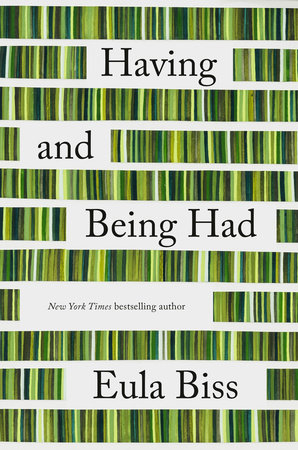
I wanted to read Eula Biss’s award-winning book, On Inoculation, but I couldn’t get it to ship and then I saw she had a newer book out about capitalism that was being praised by the likes of Maggie Nelson and so I picked it up. It’s very well-written, I enjoy her voice, it makes me want even more to read On Inoculation, and, for what it’s worth, I think it does an excellent job of expressing how upwardly-mobile but woke people struggle to come to grips with these two (sometimes rather contradictory) sides of what they like about themselves. The question remains as to what that’s worth though. I’m undecided.
6. Entangled Life: How Fungi Make Our Worlds, Change Our Minds & Shape Our Futures by Merlin Sheldrake.

Fungi are really seeing a resurgence in the popular imagination. From mushroom-assisted therapy related to death and dying, to the wood wide wife popularized by mycologically-oriented foresters, to the fungal underlands explored by Robert MacFarlane (who first introduced me to Merlin Sheldrake), it seems like we can’t get enough of mushrooms right now. And few people have such wide-ranging but accessible knowledge about mushrooms as Merlin Sheldrake (I mean, hey, even his name sounds like the name of a mushroom or, at least, a guide on a mycological mystery tour). So Entangled life is a great book, full of fascinating facts. However, I feel like Sheldrake is still finding his voice as an author and so, at times, the book feels like a list of “10 things you didn’t know about mushrooms but really should (just wait till you get to #8)!” Wonderful content, in other words, but the presentation left me a bit disappointed.
7. When My Brother Was an Aztec by Natalie Diaz.
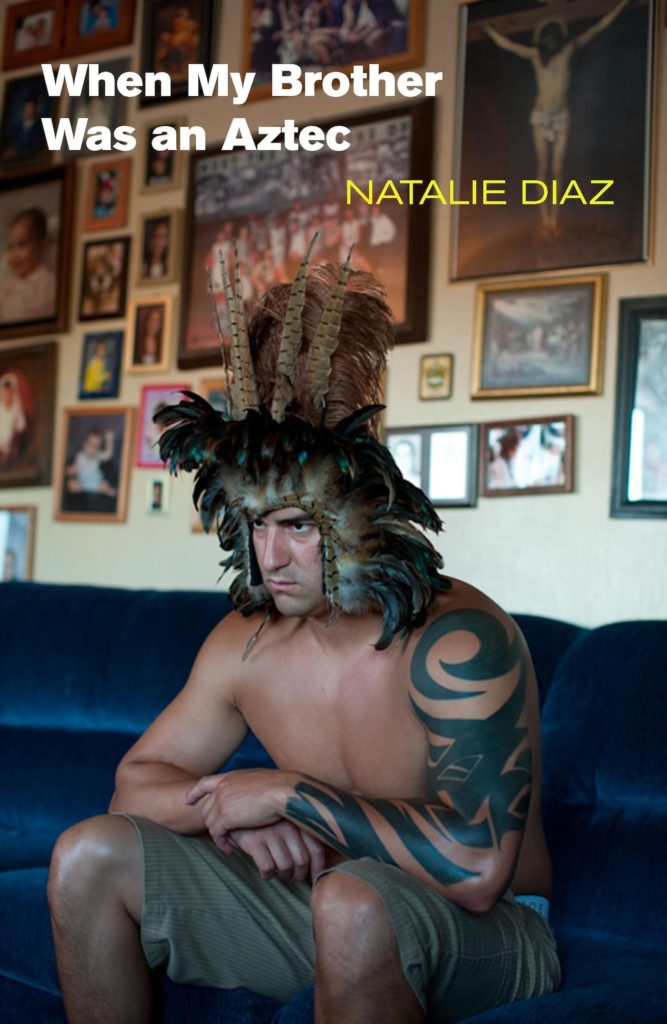
After reading Postcolonial Love Poems I went back and read Natalie Diaz’s earlier work, When My Brother Was an Aztec. I enjoyed it quite a lot although, in this case, it’s really true to describe it as a “first collection from a poet who shows a lot of potential” (potential that was realized in Postcolonial Love Poems). Still recommended reading.
8. Feed by Tommy Pico.
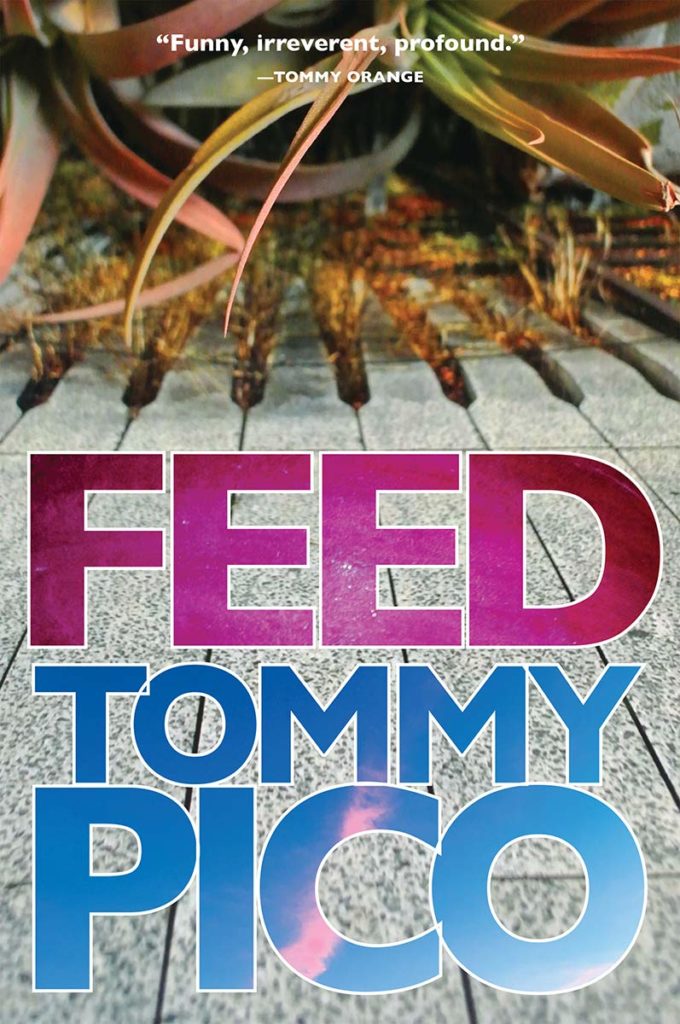
I just… um… I’ve mentioned before that extended poems, book-length epic poems, that sort of thing, aren’t my jam, right? Well, Feed is an extended poem of this sort although it’s more of an anti-epic epic poem, and it’s very self-aware and aware of how cool it is and aware of how self-aware it is and, yeah, probably all the cool kids who don’t go in for words like “cool” in the lit scene in New York really love it but, um, I didn’t.
MOVIES
1. Somewhere (2010) directed by Sofia Coppola.

A film about successful and womanizing film director who seems lost in the ennui of his altogether too rich existence until he connects with the daughter he previously neglected, directed by the daughter of a successful and womanizing film director is bound to make people wonder how much of herself Sofia Coppola has put into this piece. Between that, Coppola’s solid body of work, keen eye for detail, and lavish sets, I think the film is able to reel in the critics. It reeled me in. But it also left me feeling dissatisfied. It felt a little bit like a repositioning of or sequel to Lost in Translation and, like most sequels, it fails to hit the bar set by the original.
2. 24 Frames (2017) directed by Abbas Kiarostami.
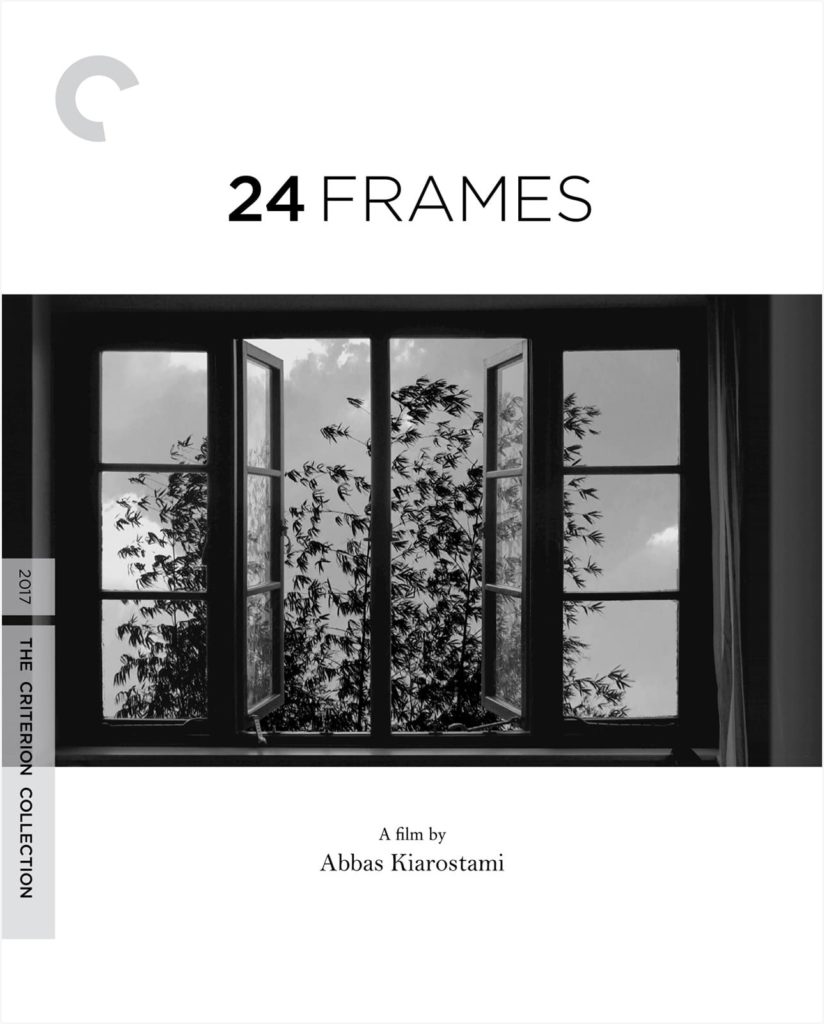
Sometimes I force myself to watch things to try and understand what others see in them. 24 Frames, the swansong of famed Iranian director and photographer Abbas Kiarostami, was one such thing. Sadly, apart from a few moments (when the elk turned back to seek out its companion, when the seagull was shot, when the car window rolled down), I mostly felt like I was undergoing some kind of meditative endurance test—like when monks meditate in freezing cold water, or sleep on a bed of nails—can I endure this without losing my fucking mind? I didn’t lose my mind. So, um, if managing to endure something without losing your mind is your go-to for films to watch, then have at this one!
3. Aniara (2018) directed by Pella Kågerman and Hugo Lilja.
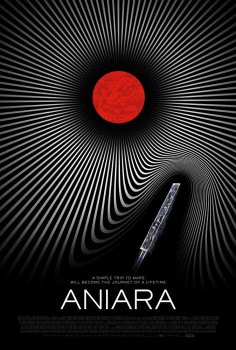
I cannot think of another science fiction film that I enjoyed more—and that has stayed with me longer—than Aniara. So much of the “smart” or “artsy” or “literary” or aspirational science fiction (science fiction, in other words, that aspires to be “more” than simply a romping good time like Mars Attacks or some kind of prepubescent cis-male wish fulfillment like Ender’s Game or Battlefield Earth—think Kubrick’s 2001, Tarkovsky’s Solaris, or Duncan Jones’s Moon) ends up feeling like a “close but not quite to me.” Originally, I that maybe Aniara was the same. But the more I thought about it, the more I felt myself compelled to think more about it, and the more I chased this loop, the more I discovered that Aniara actually resonated very deeply with me and did an excellent job of reflecting both the hopelessness of our situation and all the ways in which we are fundamentally unable to abide hopelessness or recognize it as our only possible future. This is us. For reals. Recommended viewing.
4. Salt of the Earth (1954) directed by Herbert Biberman.

In 1954, Herbert Biberman released a film starring Mexican miners, featuring a strong female Mexican lead, and deconstructing everything from patriarchal gender norms, to wage slavery, to American imperialism and colonization—and the film, along with Biberman, was immediately blacklisted. It’s a remarkable piece that I’m tempted to describe as “way before its time” but the truth is that strong women leaders, anti-capitalist resistance, anti-colonial struggles, and workers who resist death-dealing labour conditions, have been around as long as women, capitalism, colonialism, and work have been around. Biberman just gets himself in trouble because he centres all of these things in a world that is dominated by wealth, White colonial patriarchs. So how much has that changed? Not as much as Biberman would have hoped. Instead, representations like Biberman’s are now winning awards in film (think for example, of Alfonso Cuarón’s highly-praised but problematical 2018 film, Roma) and yet the White colonial patriarchs are still steering the ship. Or, if not them, then they’ve raised up representatives from various colonized or racialized or gendered groups to do their dirty work for them. Thus, if Salt of the Earth was ahead of its time, even though it simply unveiled a part of history that has been blacked-out for as long as there is history, we can say that the vision Biberman offers, in 1954, is also ahead of our time. Even though the struggle continues today.
5. Elena (2011) directed by Andrei Zvyagintsev.

Andrei Zvyagintsev is, in my opinion, one of the greatest movie directors of all time. And I think he is only getting better with age. Leviathan and then Loveless were both masterpieces. Since watching them, I have been working my way through his earlier films—first, The Return, then, the Banishment, and now, Elena. In all of these films, Zvyagintsev is focused upon familial relationships and he captures the interwoven elements of torment and tenderness, devotion and despair, mutual care and mutual destruction that suffuse so many families. It is brilliant work that any fan of Russian literature will immediately feel at home within. In fact, it could also be argued that each successive film illustrates the truth of Tolstoy’s opening line in Anna Karenina: “Happy families are all alike; every unhappy family is unhappy in its own way.” But, of course, the concept of family is nothing if not a political category and there is a strong subtext of class running through this film as well (as it does in Zvyagintsev’s other work) and, in this regard, Elena is something of a more subtle and subdued precursor to the Korean hit, Parasite (2019, directed by Bong Joon Ho). It’s a strong piece and I can’t help by recommend it—unless you haven’t watched Loveless yet. Then go watch that.
6. Cat Soup (2001) directed by Tatsuo Satō.
Cat Soup is a short but influential anime film from 2001. You can watch the whole thing here:
It was sufficiently perplexing, intriguing, and short that I chose to watch it twice. Satō disavows any linear meaning or narrative structure to the movie, although I think he’s not being entirely honest about that. There may be more than he is willing to admit (in part, I think, because he isn’t particularly invested in that element of film-making or, perhaps, life itself). A lot of the scenes are memorable—from the frozen ocean to the elephants made of water to father time (although others suggest he is a god?) devouring planets. I’m half-tempted to see it as a radically remake of Citizen Kane with the orange flower playing the role of Rosebud (pay attention to that flower—it shows up at critical junctures and plays an essential role in the development of the story!). Anyway, I had fun with this one.
7. The Invisible Man (2020) directed by Leigh Whannel.

If John Carpenter’s Halloween had actually debuted in 2020 instead of in 1978, I am certain that some critics would have hailed it as a feminist presentation of gendered violence, influenced by the #metoo movement, and featuring a strong cis-female lead (none other than scream-Queen Jamie Lee Curtis in her break-out role), who ultimately takes down the cis-man who stalks her (NB: she reports this to her friends who don’t take her seriously) and who eventually tries to kill her. Reading Halloween in this way, begs the question: what is it, exactly, about a horror film with a strong cis-female lead who eventually takes down the violent man who haunts, horrifies, and ultimately attempts to kill her, that actually makes it something dynamic and new, informed by contemporary feminist theory and the lessons we have learned from the #metoo movement? After all, horror movies in the ‘80s, as Wes Craven’s Scream (1996) so clearly demonstrated, were always thinly disguised morality plays. Don’t smoke, don’t drink, don’t do drugs, and don’t go with boys who do. The topless girl in Act 1 is the headless girl in Act 2 and it’s always the virgin who survives. But nobody really took the morality element seriously and it was laughed off as something that was worked into the script in order to bypass concerns raised by moralizing censors who didn’t just want to see sex and violence just for the sake of seeing sex and violence. But, of course, that’s precisely why people watched people watched Halloween or Wes Craven’s earlier contributions from The Last House on the Left (1972) and The Hills Have Eyes (1977) to his entire Nightmare on Elm Street series.
I found myself thinking these things while watching Leigh Wannel’s rendition of The Invisible Man because it presented itself as a woke feminist horror film inspired, in part, by the #metoo movement (featuring contemporary scream-Queen, Elisabeth Moss), but all I could think was, “gosh, this really feels like I’m watching an obsessive, abusive, violent stalker’s fantasy.” Because, yes, there’s a strong cis-female lead and, yes, she comes out on top in the end but, I don’t know, the suggestion that this is really a feminist film strikes me as just about as well-suited as describing the ‘80s horror films as potent political affirmations of conservative ethical instructions. Much like earlier horror reveled in the (formerly) taboo regions of sex and violence, and some kind of combination of the two, it seems to me that The Invisible Man is the celebration of one man who delights having god-like power over a woman, no moral restraints, and though, okay, okay, the woman wins in the edge that seems more like a wink and a nudge and a me too hashtag to get away with having spent the last sixty or so minutes #winning.
8. Freaky (2020) directed by Christopher Landon.
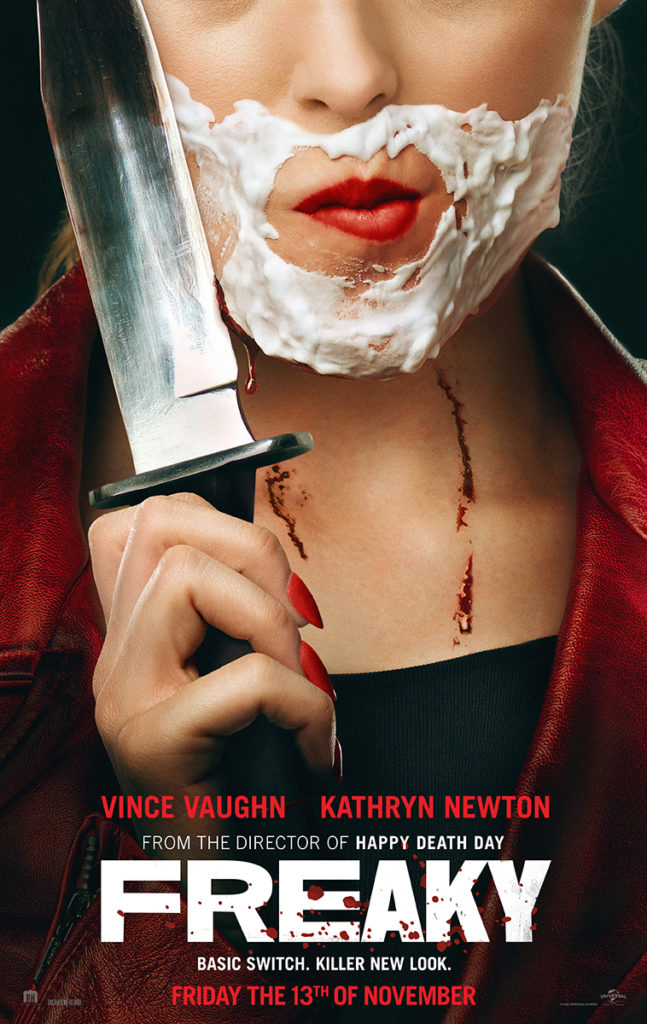
Okay, so from a critical analysis of so-called pop feminist horror, to a film that claims to just be a romping good time in the spirit of Scream or Friday the 13th, I found myself mostly ho-humming my way through a genre-piece that has mostly been done to death—done, in fact, to every kind of death imaginable. It’s nearly impossible now for this kind of horror to not be self-aware (the gay dude and the Black gal are convinced, for example, that they will die because they are, after all, the gay dude and the Black gal) and that feels clever and fun the first few times but then starts feeling a bit old. There were a few moments when queering things up did make the movie more fun. When the crush of the young female lead makes out with Vince Vaughn (because his body has been possessed by the soul of the young female lead) that made me chuckle—and it also made me appreciate the fact that, hey, if you fall in love with someone, you keep on loving them even if their body changes over time. Perhaps even no matter how much their body changes over time. Other than that, I do appreciate how this genre of self-aware comedy horror has mostly moved beyond the sexualization of violence. That still persists in the hyper-realistic gore horror scene but it has dropped out of a lot of other horror subgenres (as far as I can tell). I think this has less to do with society getting woke as it has to do with the ubiquity of porn on the internet. Maybe I’m wrong though.
DOCUMENTARIES
1. Mayor (2020) directed by David Osit.
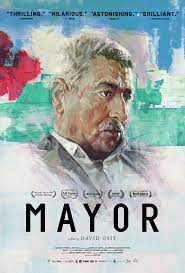
When I watched this documentary about the Mayor of Ramallah, I didn’t realize how timely it would be. Shortly after I finished watching it’s extremely tense conclusion (the Mayor watches from a blacked-out city hall as Israeli soldiers forcibly penetrate the most intimate regions of the city), Israeli settlers ramped up their genocidal assault upon Palestinians living in Jerusalem and then the Israeli army, once again, bombed the fuck out of civilians living in Gaza. A timely documentary, indeed, for David Osit’s biopic about Musa Hadid gives as honest a look as I’ve ever seen at what it’s like trying to work within a municipality under occupation. Very highly recommended.
2. Sasquatch (2021) directed by Joshua Rofé.
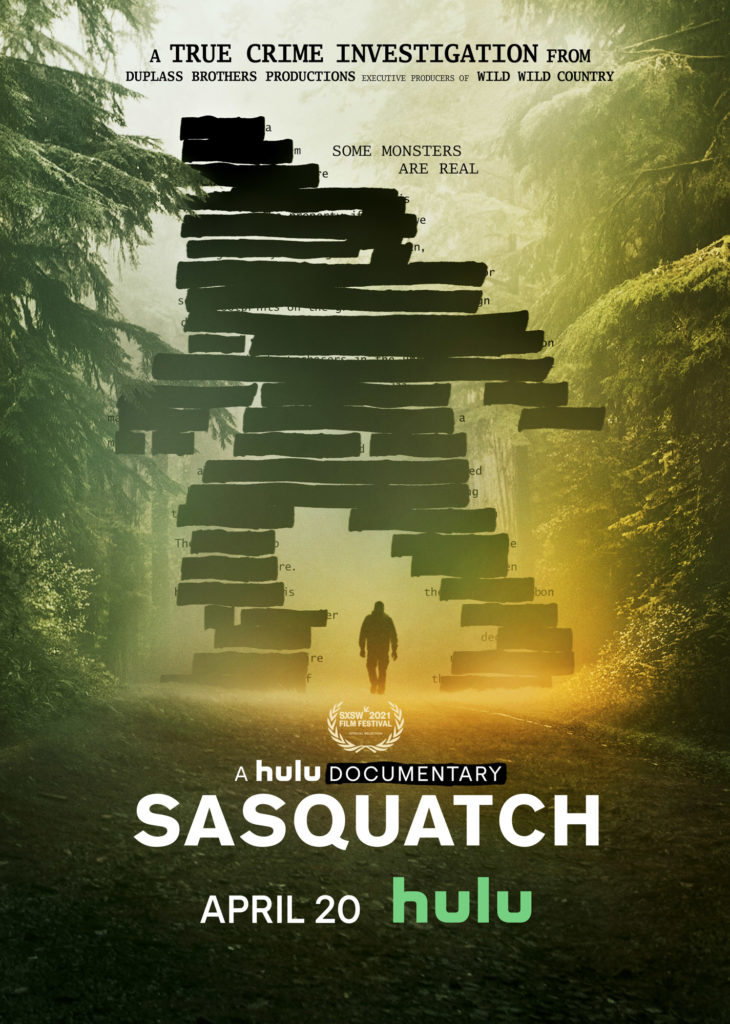
In the early ‘90s, Joshua Rofé was working on a marijuana grow-op in Northern California that, according to the workers, was haunted by killer Bigfoots. In fact, one night while watching TV in his boss’s shack, two men came in crying hysterically that they had found the bodies of three workers totally ripped apart by Bigfoots. What the fuck. Joshua got the fuck out of there shortly thereafter and pursued a career as an investigative journalist. Then, about twenty years later, he asked himself, what in the world was going on back there on that marijuana farm? So, he went searching for sasquatch, chasing a big fish story like no other, and what he found was much more terrifying and human than any mythical monster. I thoroughly enjoyed this docuseries. Good times.
3. Athlete A (2020) directed by Bonni Cohen and Jon Shenk.
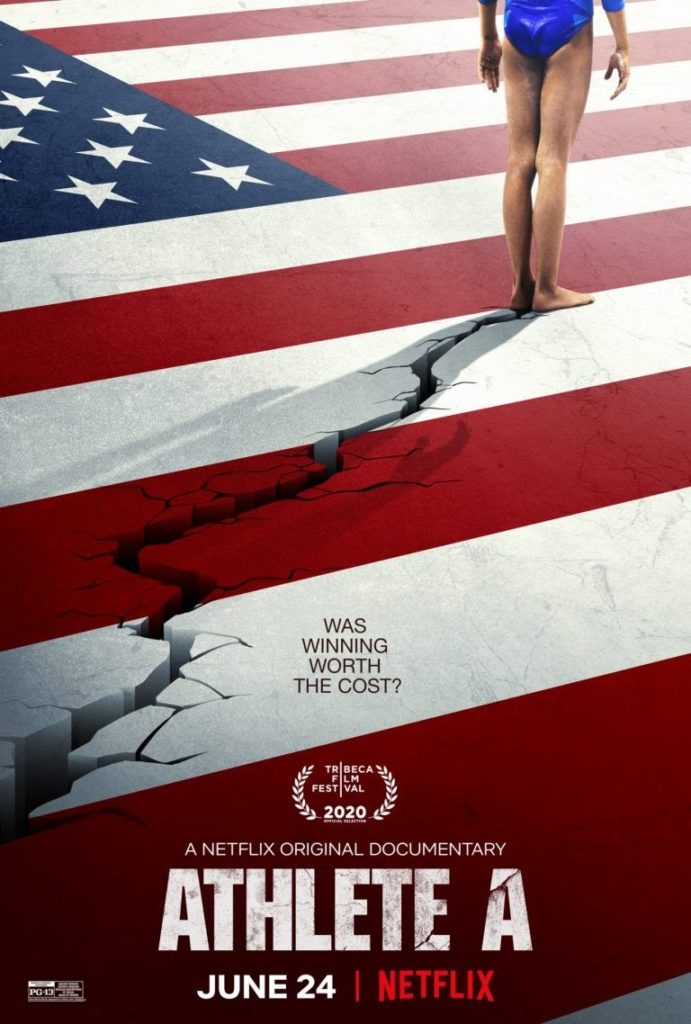
The New York Times recent ran an article entitled “What If Everything We Know About Gymnastics is Wrong?” (see here: https://www.nytimes.com/2021/05/04/magazine/gymnastics-abuse.html?action=click&module=Top+Stories&pgtype=Homepage). It makes a lot of cogent points about the falsity of the narrative the links gymnastic success with youth (and very young youth at that). Gymnastics, it turns out, is less about youthful success than it is about abusing girls in order to advance one’s own status (as a couch, as a school, as a club, as a nation). Larry Nassar and the (at minimum) 300+ girls and young women he repeatedly sexually assaulted are the focus of this docuseries and highlight one element of the abuse that is prevalent in gymnastics. There is no doubt that Nassar is a serial sex offender who exploited his position of power and the vulnerability of his victims to get away with sexually assaulting hundreds of people—but there is also no doubt that Nassar was aided and abetted by other powerful individuals and structures. I feel like documentaries are getting better at bringing attention to these things—the complicity of other people with power, the ways in which people sacrifice just about anyone in order to protect their own brand status and profit margins, and the violence of systems that are designed to generate wealth and power instead of attending to human needs—and this series touches on those things, but I wish they were centred more. But, of course, the spectacle of the monstrous Nassar and the innocent vicims/strong survivors are likely to draw larger audiences. It’s hard to not get caught in the spectacle. Plus, the human element is strongest in focusing on, well, individuals instead of systems. Still, with the proliferation of documentaries about serial rapists (R. Kelly, Michael Jackson, Larry Nassar, and so on) as well as survivors, it will be good to see more films move into the territory of focusing just as intensely on the allies of abusers and the systems that are arranged to benefit them.
4. The Devil Next Door (2019) directed by Yossi Bloch and Daniel Sivan.

In 1986, a Ford plant worker in Cleveland, John Demjanjuk, is identified as a notorious Nazi deathcamp guard, Ivan the Terrible. He is stripped of his American citizenship and extradited to Israel for trial. He faces a possible death sentence for participating in genocide, committing crimes against humanity, and so on. Camp survivors identify him in court in profoundly painful, compelling, and dramatic moments. And yet… and yet… John Demjanjuk may not be Ivan the Terrible. And so an Israeli lawyer defends him. His original conviction is overturned. Demjanjuk, it turns out, is likely someone else and so he is release even though it has become clearly established that he was, in fact, a Nazi guard working at a different deathcamp (Sobibor instead of Treblinka). However, Israeli double jeopardy laws forbid bringing the same charges against him and so he returns to the United States in 1993 where he returns to being a family man, going to church, being involved with the Ukrainian community, and so on. Then, in 2009, at the age of 89, he is extradited to Germany, charged, and convicted for his work in the camp and as a Trawniki man (i.e., someone from Eastern Europe recruited by the Germans to participate in execution squads). He dies two years in a Seniors’ home in Germany where he was awaiting the result of his appeal.
Such is the story presented in this Netflix docuseries and it is a good one to watch. It raises all kinds of challenging questions—how do we honour and centre the testimony of survivors? What about when survivors remember things wrongly? How do we pursue justice? What does fairness mean in trial such as this? What does fairness mean post-genocide? Should the Israeli lawyer have respresented Demjanjuk. That lawyer had acid thrown in his face because of this and a senior Israeli lawyer who agreed to help with the appeal was blackmailed and drive to suicide as a result—was that just? Unjust? Beyond justice? And what’s with all these Nazi war criminals quietly working away in American suburbs? Just how many Nazis found shelter in America (see the documentaries of Marcel Ophuls for more on that)? And, given that so many did, just how much did Nazism affect the trajectory of America after the war? These are all questions the series raises, although it doesn’t spend a considerable amount of time trying to answer them. That work is up to us.
5. Grey Gardens (1975) directed by Albert and David Maysles, Ellen Hovde, and Muffie Meyer.
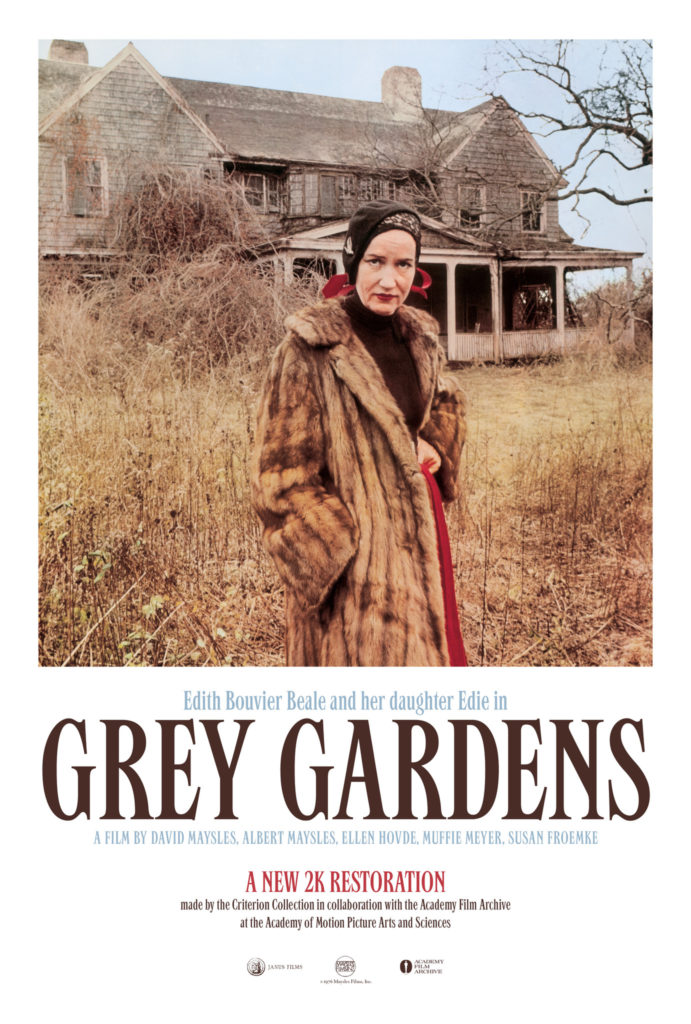
One of the most critically-acclaimed and influential documentaries of all time, Grey Gardens is a movie about Edith and Eddie—an aging mother and daughter , who happen to be related to Jackie Onassis Kennedy, and who also happen to be living on an estate that appears to have been slowly collapsing over the last forty or so years. It’s an early variant on the “documentary filmmakers discover fascinatingly odd people and films them being themselves” genre (think, also, of The Wolfpack or The Tiger King for later renditions of this). There is not much need for plot or narrative development or anything like that. These are character studies and so, all we need to do, is watch Edith and Eddie interact with one another, or with the camera, or with the gardener, now in the bedroom, now on the sun porch, now in the front hall, and we are entertained. It’s a film well-done and, having also enjoyed the Maysles brothers’ documentary about a door-to-door Bible salesman (Salesman [1968]), I think I’ll start looking up some of their other films as well.
6. Above and Below (2015) directed by Nicholas Steiner.
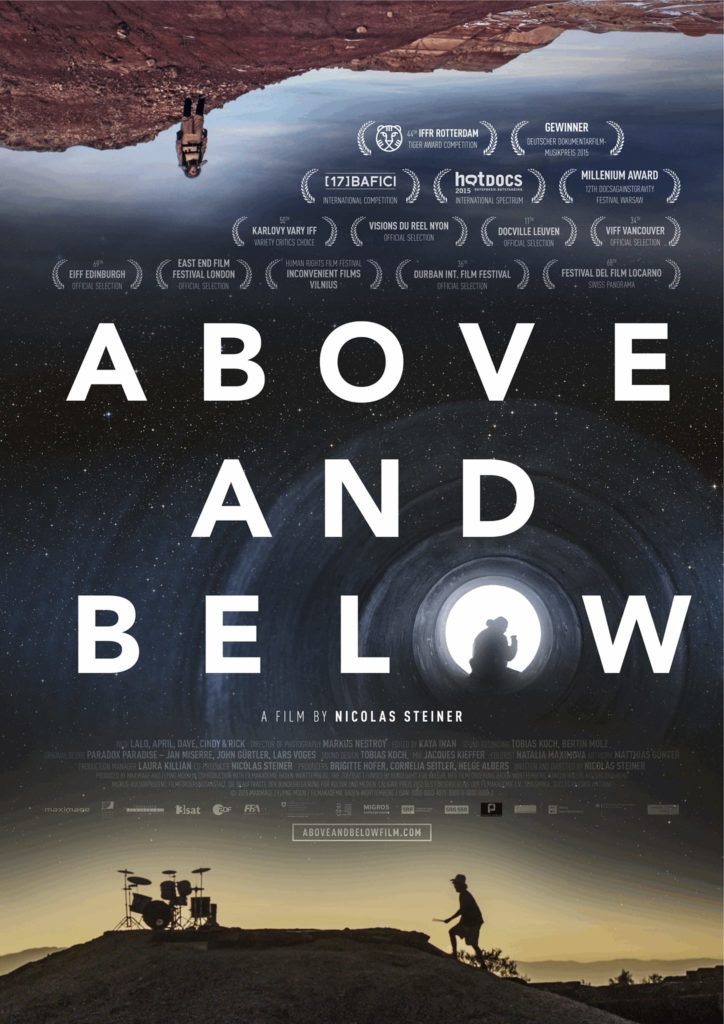
Twenty years ago, I watched a documentary called Dark Days, about people who live in the subway tunnels in New York City (I also stumbled on Jennifer Toth’s book, The Mole People, around the same time). This inspired me to do a bit of tunnel exploring of my own in Toronto and, yes, there are camps down there as well. It seems this is a feature of neoliberal urbanism wherein poverty goes from being something to be solved to something to be managed. Nicholas Steiner offers a variation of this with biopic about some of the people living on the fringes of Las Vegas—a man who lives in the desert in an abandoned army bunker, a couple who live in a storm drain and, just for fun, a group of people who live in a research station in the badlands of Utah in order to try and simulate what it might be like to live on Mars. It is easy to notice that trauma of some kind runs through the lives of these people but, before we rush to place all the explanatory power for lives such as these onto trauma, it’s worth remembering that trauma of some kind runs through all of our lives. So, if living life in such places is some kind of response to trauma (flight for some, healing for others, entirely shifting the plane of reference for still others), then it might be worth asking why *this* response and not that one or that one or that one? Steiner doesn’t answer this question. He stays mostly at a surface level, content to film exotic locations populated by exotic individuals.
7. Allen v. Farrow (2021) directed by Kirby Dick and Amy Ziering.
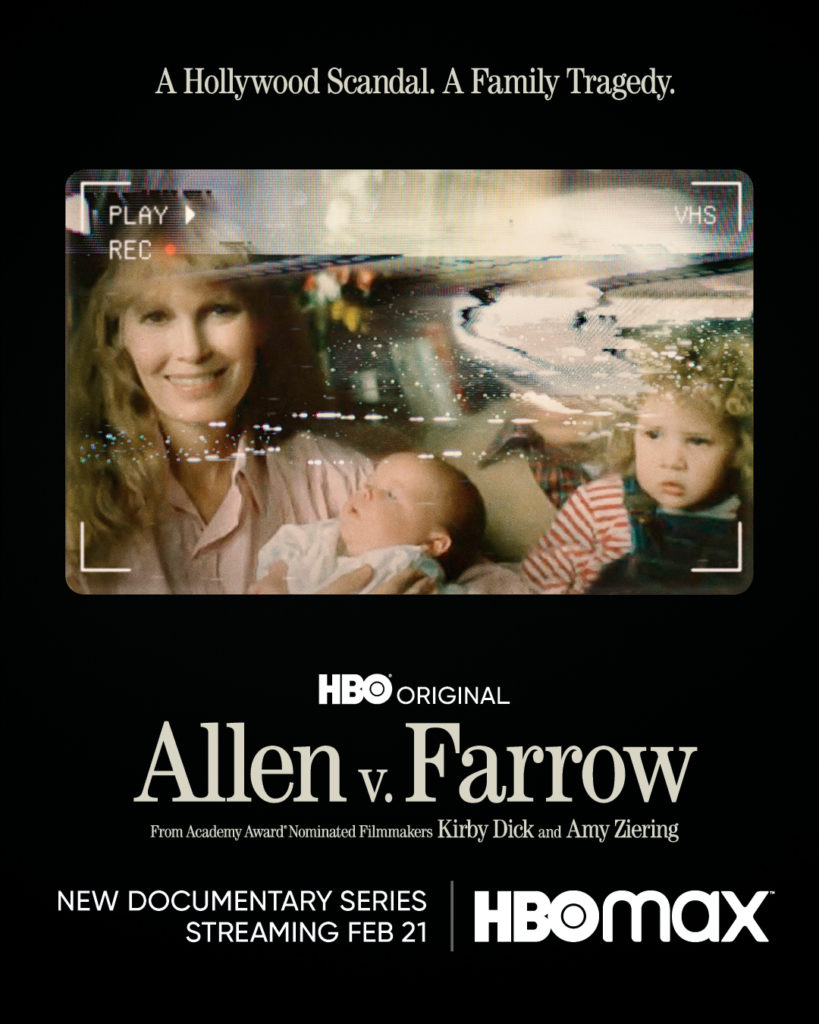
Fuck Woody Allen and everything he ever did. I hope he dies painfully and alone. Even then, he will have gotten off easy.
That’s mostly all I want to say about this docuseries.
I would have liked the directors to explore the complexity of Mia Farrow, not in her relation to Woody, but in her relation to her children. But the directors set up a pretty black-and-good bad/good people scenario (Woody = bad; Farrow = good). And, for much of what is described, this is very much the case. But… but… enough red flags went up during the episodes that made me wonder about Farrow’s complicity at times or, at least, at her responding in ways that harmed rather than helped her kids. Woody can fuck off and die painfully and alone. But can those of us who have complex relationships with a parent who was both abused by their partner *and* who sometimes (accidentally or intentionally) contributed to the harm experienced by children who were abused, have the opportunity to see this explored in a documentary and made a topic for public conversation? I think that would be helpful.